The Swing Overview - Week 9
The war in Ukraine continues, and although we all want this tragic event to be ended immediately, but unfortunately, according to last statements of Russian officials, it looks like the war will drag on for a longer period of time. Investors have reacted to this development by selling risk assets, including the Czech koruna. Stock indices are losing ground and the DAX in particular has been under heavy pressure. On the other hand, commodities such as oil, gold, and coal are strengthening strongly.
Somewhat surprising is the development in the Australian dollar, which usually weakens in the events of geopolitical uncertainties. However, there is a reason for its current rise. More on this in our article.
Conflict in Ukraine
Vladimir Putin probably did not expect to encounter such a brave resistance from Ukraine and that almost the whole world would send Russia into isolation through significant sanctions. The list of companies and actions that have cut ties with Russia is growing day by the day and Western companies are leaving Russia. Thus, for Russians, foreign goods (food, clothing, furniture, electronics, cars) will gradually become very rare.
Probably the strongest sanction that Russia has felt so far, was the freeze of the Russian Central Bank's foreign exchange reserves. In response, the Russian ruble began to depreciate significantly on February 28, 2022, and has already lost more than 30% of its pre-invasion value. In response, the Russian Central Bank intervened by raising the interest rate to 20%, which temporarily halted the ruble's fall.
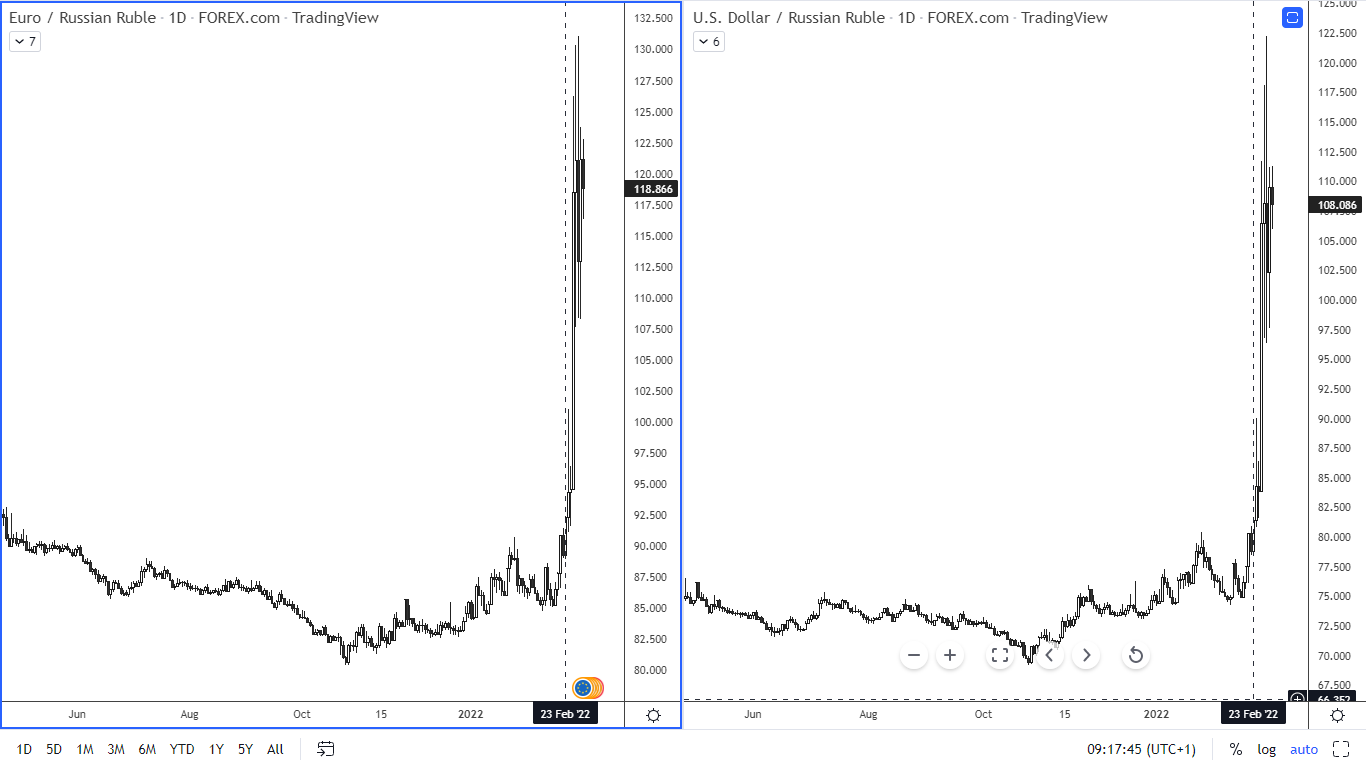
Figure 1: The Russian ruble paired with the USD and the euro
Meanwhile, Western countries have not exhausted all options to stop Russia in this war through economic sanctions in case of further escalation of the conflict yet. The fact that European countries might stop taking Russian gas is also at stake. This would, of course, have a very significant impact on the entire European economy. However, these are still just some economic losses, which can not be compared at all with the losses of lives experienced by the unprecedentedly attacked Ukraine.
In any case, this crisis seems to have the potential to surpass in its consequences the crisis that occurred in Russia in 1998, which led to inflation exceeding 80% and central bank interest rates reaching 150%.
Data from the US economy
The ISM manufacturing sentiment indicator for February came in at 58.6 which is better than expected and points to an optimistic development of the US economy.
In the labour market sector, the ADP (non-farm job change) indicator was reported, which showed that 475 thousand jobs were created in America in February (compared to 509 thousand in January). The number of unemployment claims reached 215 thousand last week, which was less than expected 226 thousand.
Thus, the data show that the US economy is doing well so far and the US Fed is going to raise interest rates at its next meeting on March 16, 2022. Jerome Powell said that he would support a 0.25% rate hike. Powell also said that the war in Ukraine means significant uncertainty for monetary policy.
The US dollar and bond yields
The US dollar continues to strengthen, as the USD index shows. In addition to the expected US interest rate hike, the US dollar bullishness is explained by demand for US government bonds in times of uncertainty. Demand for these bonds then pushes down their yields, which continue to fall.
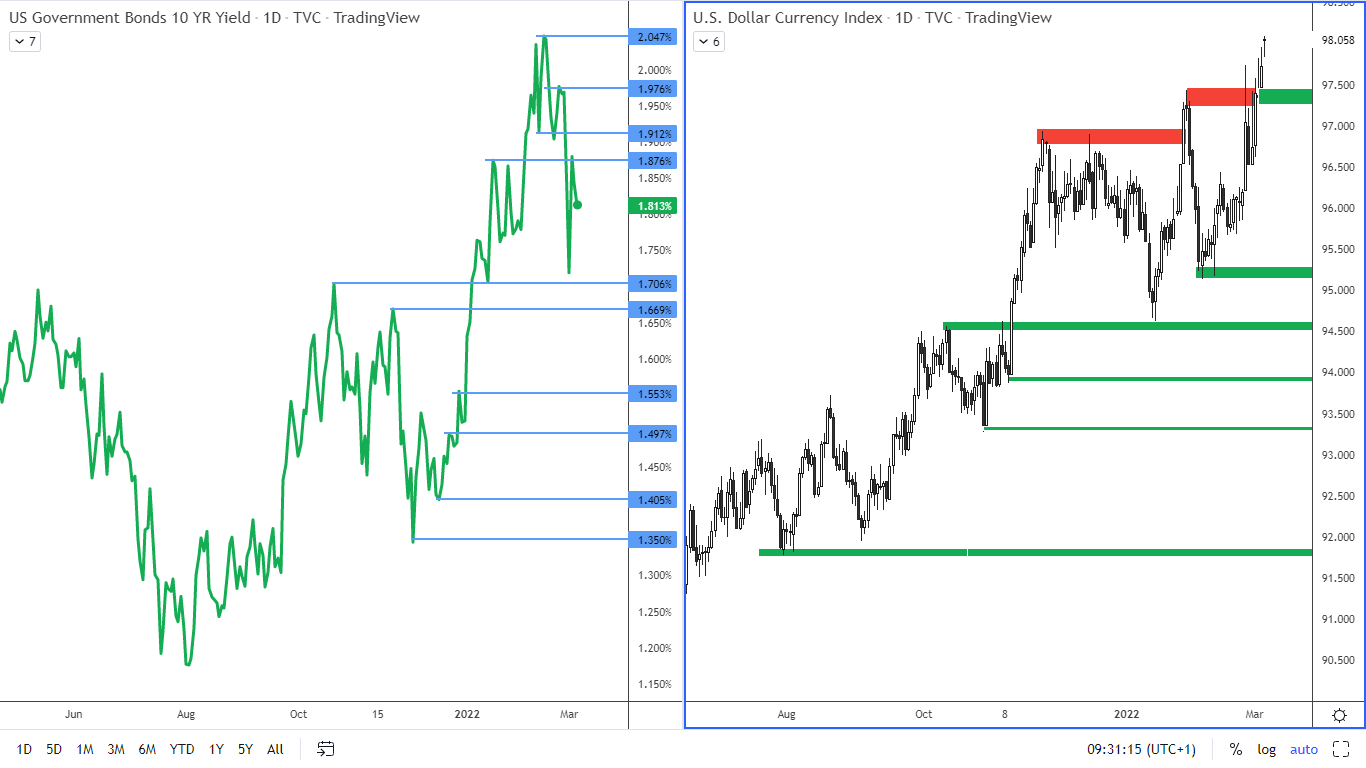 Figure 2: 10-year government bond yield on the 4H chart and USD index on the daily chart
Figure 2: 10-year government bond yield on the 4H chart and USD index on the daily chart
Index SP500
The US SP 500 index moved in a consolidation range last week. This shows that investors have so far viewed the conflict in Ukraine as an event that is more or less a regional event and therefore saw cheap stocks as a buying opportunity.
However, the sanctions adopted by Western countries will of course also have an impact on the global economy, especially if the conflict deepens further. This concern was then reflected at the end of the week when the index started to weaken.
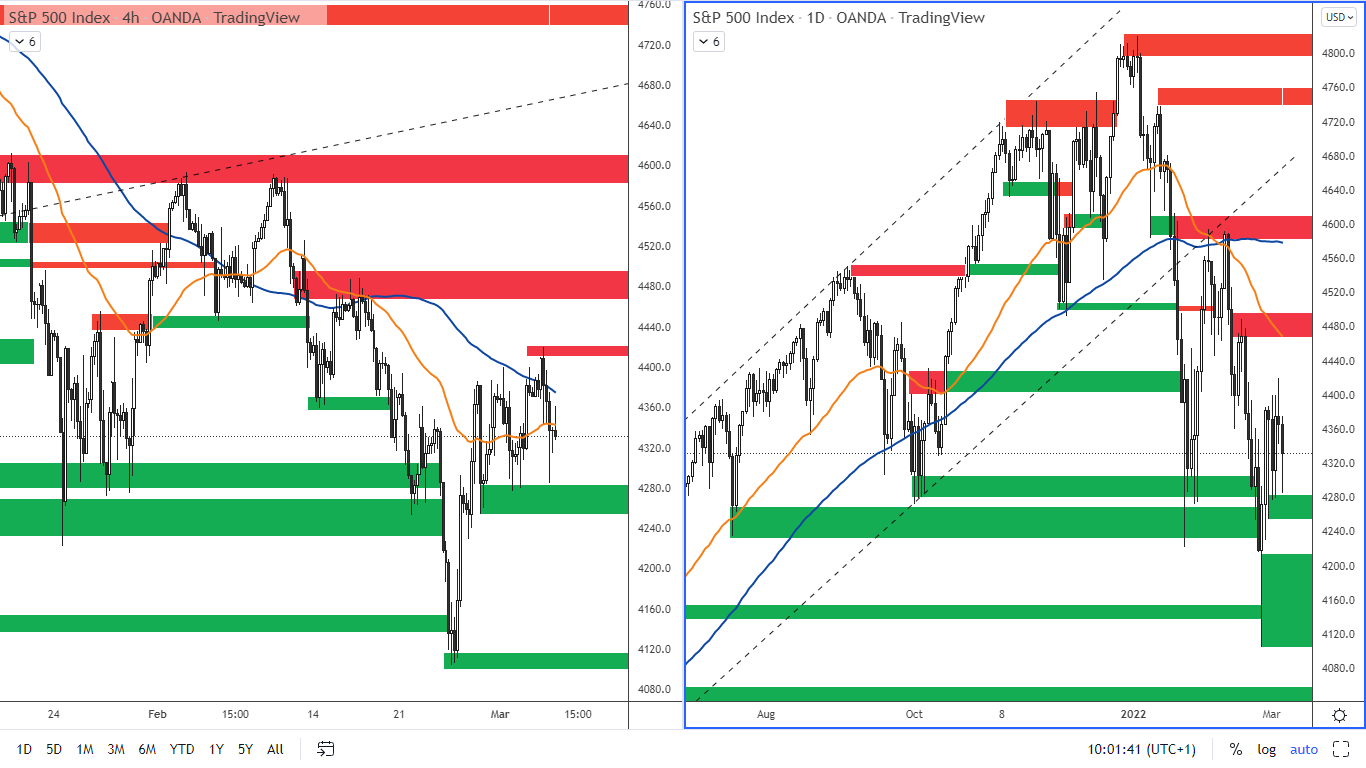 Figure 3: The SP 500 on H4 and D1 chart
Figure 3: The SP 500 on H4 and D1 chart
Resistance according to the H4 chart is in the region of around 4,410 - 4,420. The nearest support according to the H4 chart is at 4255 - 4284. Significant support is at 4,100 - 4,113.
German DAX index
In contrast to the SP 500 index, there was a big sell-off in the DAX, showing that investors are worried, among other things, that a further escalation of the conflict could lead to a disruption in the supply of Russian gas, on which Germany is heavily dependent.
According to the daily chart, it looks like the DAX index is now in free fall and is breaking through support barriers as if they did not exist. It looks like the market is starting to show signs of panic selling by inexperienced investors.
If you are speculating in the short term, then bear in mind that short term speculation against such a strong downtrend is very disadvantageous and risky.
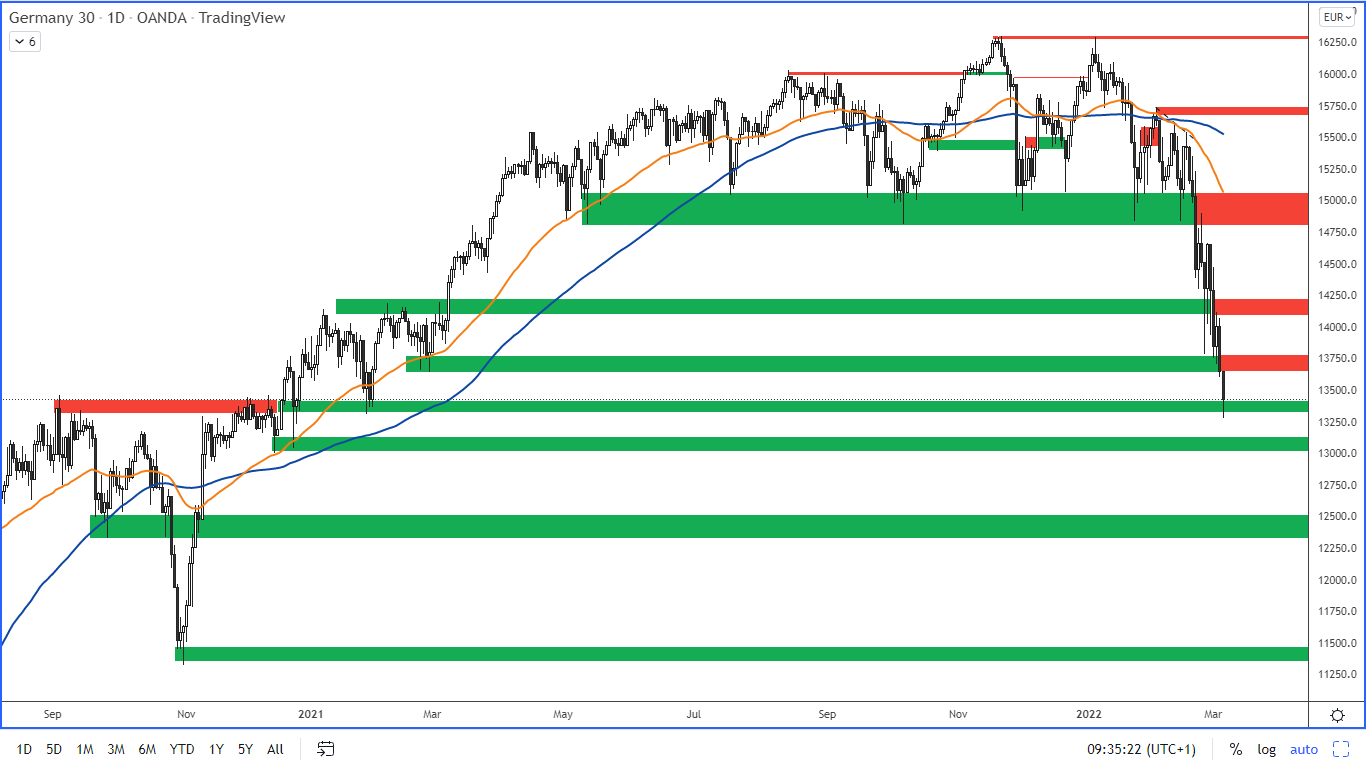 Figure 4: DAX on H4 and daily chart
Figure 4: DAX on H4 and daily chart
Current resistance is in the area of 13,655 - 13,756. The price is now at support at 13,400, which is already slightly broken, but the closing of the whole session will be crucial. The next support is then at 13 000 - 13 100.
The Czech koruna is losing significantly
The Czech koruna has long benefited from the interest rate differential, which has been very favourable for the koruna against the euro and has been the reason why the koruna has appreciated strongly since November 2021. But the Czech koruna, along with other Central European currencies, is a currency that is losing ground heavily in the current conflict.
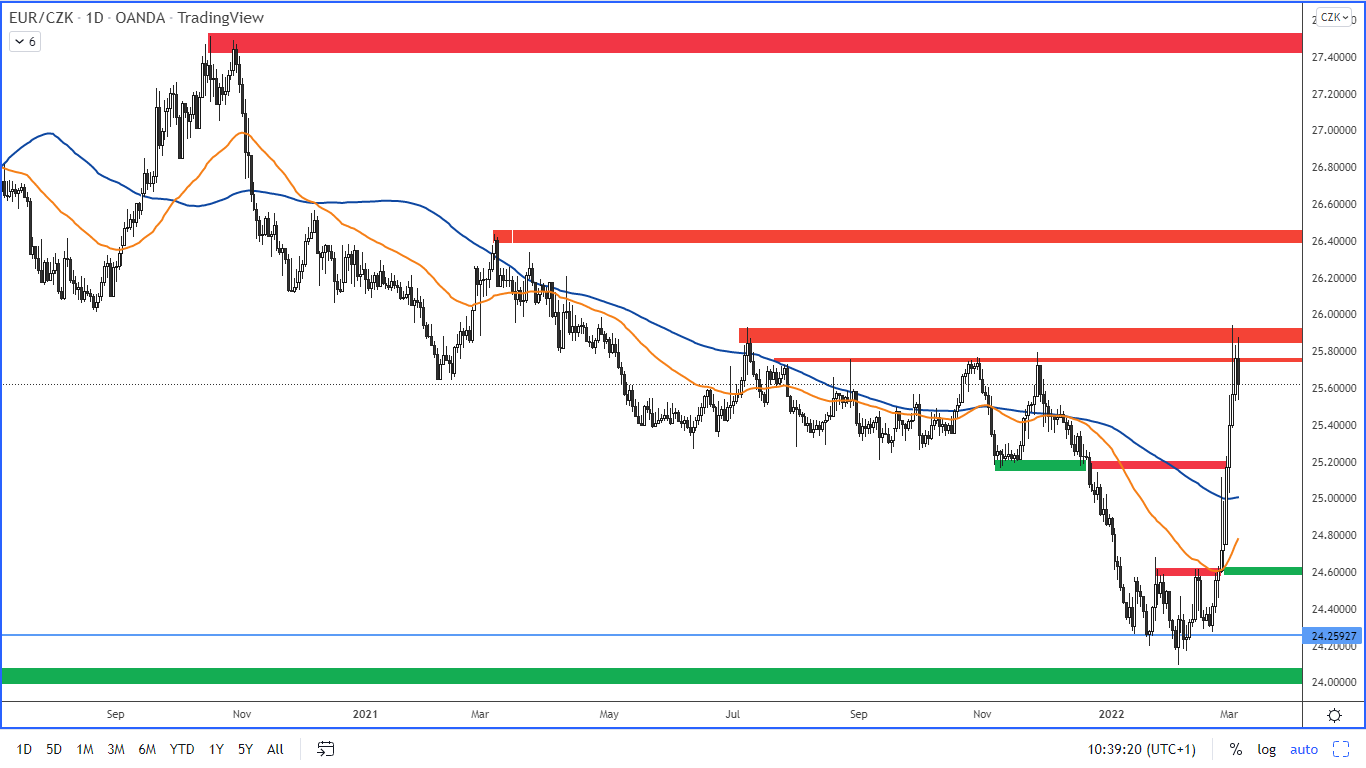 Figure 5: The EURCZK on the daily chart
Figure 5: The EURCZK on the daily chart
Firstly, there is the concern that the Czech Republic is geographically quite close to Ukraine, even though the Czech Republic does not have very significant exports directly with Ukraine nor Russia (in total, around 3% of total Czech exports). At the same time, there is concern about the Czech Republic's dependence on Russian gas. If the taps are closed, then the koruna could shoot above CZK 27 per euro.
Currently, the EURCZK pair is trading at the resistance level of 25. 80 - 25.90.
The Australian dollar
The Australian dollar is a currency that tends to weaken during major global crises. In particular, the AUDJPY pair is correlated with the SP 500 index in the short term. Currently, however, the Australian dollar is strengthening. This is because the Australian economy is export-oriented and exports commodities such as gold, iron ore, coal and gas. All these commodities are now in high demand.
Europe, for example, is realising that dependence on Russian gas is not paying off and is looking for alternatives. A temporary solution will be to rebuild coal-fired power stations. Germany and Italy have already started to buy coal stocks, which are therefore appreciating strongly. As a result, the price of coal has sky-rocketed, with one tonne reaching a record price of the USD 400.
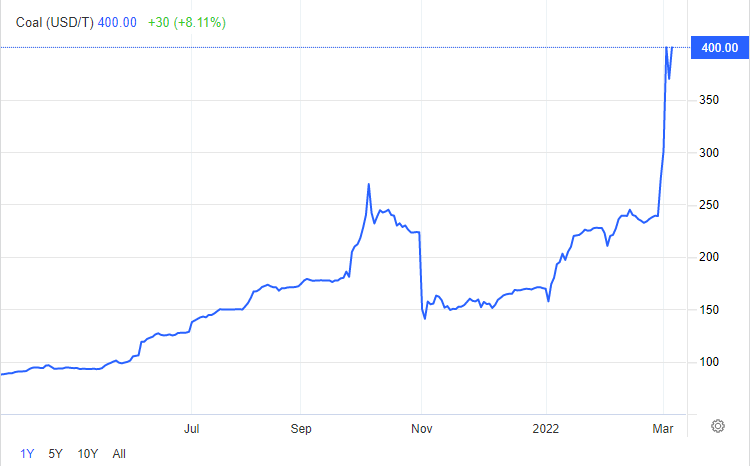 Figure 6: The coal price
Figure 6: The coal price
The gold, traditionally seen as a safe haven in times of uncertainty, is also strengthening. The gold has also been helped by a fall in US bond yields.
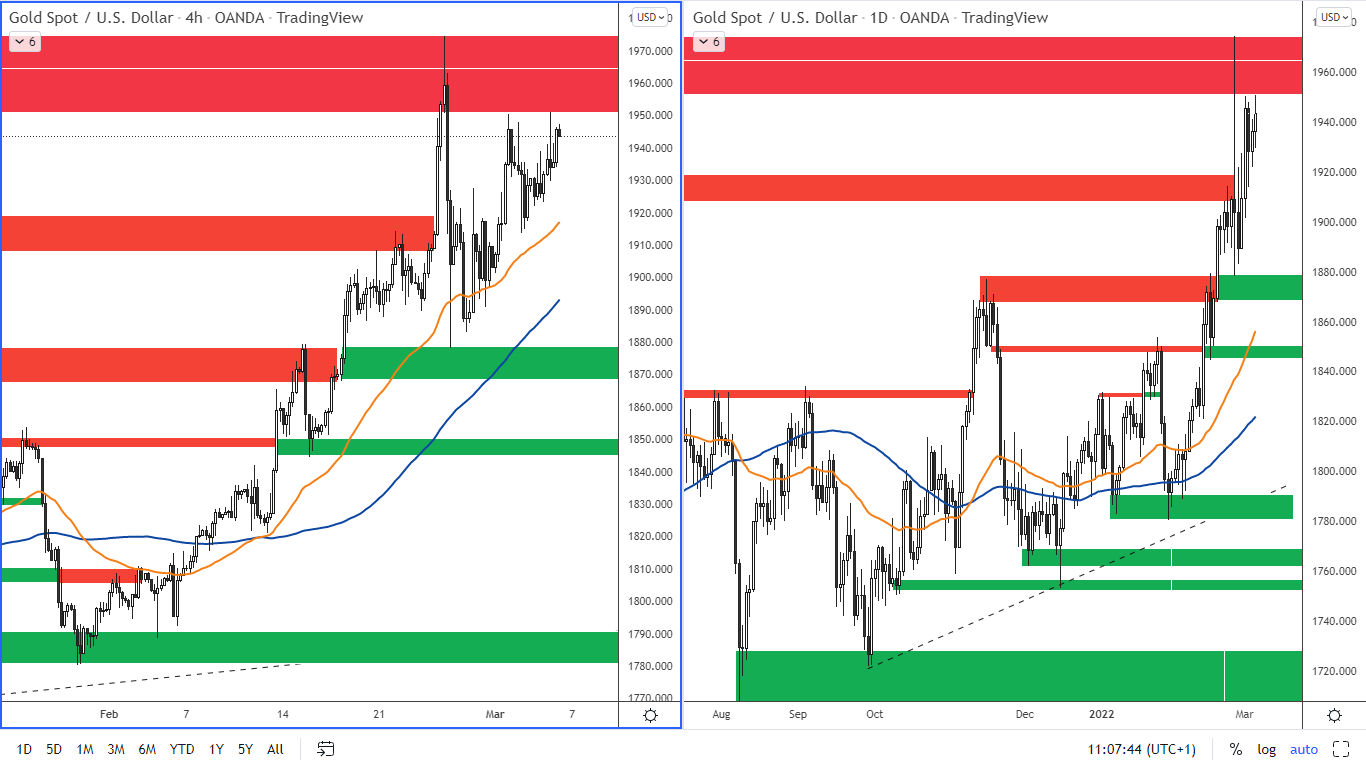 Figure 7: The gold on H4 and D1 charts
Figure 7: The gold on H4 and D1 charts
In terms of technical analysis, the gold stopped at the resistance of $1,973 per ounce. The nearest support according to the daily chart is $1,870 - 1,878 per ounce.
The rise in commodity prices then resulted in the strengthening of the Australian dollar.
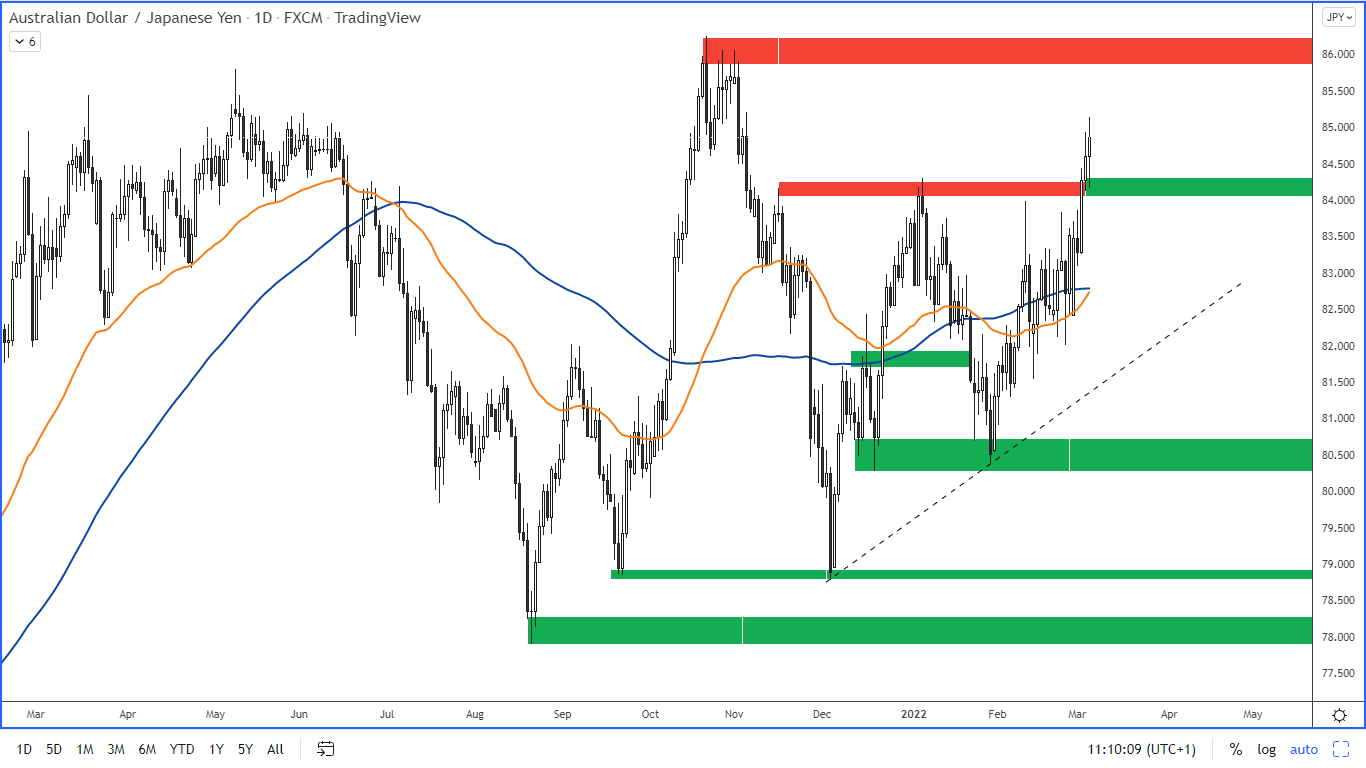 Figure 8: The AUDJPY currency pair on D1 chart
Figure 8: The AUDJPY currency pair on D1 chart
The AUDJPY broke the resistance in the range of 0.8400 - 0.8420, which became the new support. The next resistance is then at the level of 85.90 - 86.20.